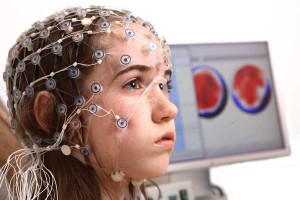is a neurological condition, which affects the nervous system. Epilepsy is also known as a seizure "sudden, excessive discharge of nervous-system electrical activity that usually causes a change in behavior". It is usually diagnosed after a person has had at least two seizures that were not caused by some known medical condition like alcohol withdrawal or extremely low blood sugar.
The seizures in epilepsy disorder characterized by transient but recurrent disturbances of brain function that may or may not be associated with impairment or loss of consciousness and abnormal movements or behavior. It may be related to a brain injury or a family tendency, but most of the time the cause is unknown. The word "epilepsy" does not indicate anything about the cause of the person's seizures, what type they are, or how severe they are.
If I have one seizure, does that mean I will get epilepsy?
About half of the people who have one seizure without a clear cause will have another one, usually within 6 months. You are twice as likely to have another seizure if you have a known brain injury or other type of brain abnormality. If you do have two seizures, there's about an 80% chance that you'll have more.
If your first seizure occurred at the time of an injury or infection in the brain, you are more likely to develop epilepsy than if you had not had a seizure in that situation.
EEG are also likely if your doctor finds abnormalities on a neurological examination; a set of tests of the functioning of your nervous system that is performed in the doctor's office.
Seizures have a beginning, middle, and end. When an individual is aware of the beginning, it may be thought of as a warning or aura. A warning before a seizure; a simple partial seizure occuring within seconds before a complex partial or secondarily generalized tonic-clonic seizure, or it may occur alone; also a warning before a migraine headache. On the other hand, an individual may not be aware of the beginning and therefore have no warning.
Sometimes, the warning or aura is not followed by any other symptoms. It may be considered a simple partial seizure Simple partial seizure that involves only part of the brain and does not impair consciousness.
The middle of the seizure may take several different forms. For people who have warnings, the aura may simply continue or it may turn into a complex partial seizure. An epileptic seizure that involves only part of the brain and impairs consciousness; often preceded by a simple partial seizure (aura, or warning).or a convulsion. An older term for a tonic-clonic seizure. For those who do not have a warning, the seizure may continue as a complex partial seizure or it may evolve into a convulsion.
The end to a seizure represents a transition from the seizure back to the individual normal state. This period is referred to as the “post-ictal period (an ictus is a seizure) and signifies the recovery period for the brain. It may last from seconds to minutes to hours, depending on several factors including which part(s) of the brain were affected by the seizure and whether the individual was on anti-seizure medication. If a person has a complex partial seizure or a convulsion, their level of awareness gradually improves during the postictal period, much like a person waking up from anesthesia after an operation.
When are people most likely to get epilepsy?
New cases of epilepsy are most common among children, especially during the first year of life. The rate of new cases gradually declines until about age 10, and then becomes stable. After age 55 or 60, the rate starts to increase, as people develop strokes, brain tumors, or Alzheimer's disease. (All of these disorders can cause epilepsy.)
Natural Healthcare Offers Hope For Epilepsy
Over the past 30 years I have seen several patients with seizure disorders and the good news is most of them respond to treatment. The response can be anywhere from substantially less seizures to a complete resolution. One common factor that we will see are changes within the skull and upper neck. This can cause irritation on the central nervous system and, in susceptible individuals, produce seizures. Chiropractic physicians are the only ones trained in the detection and correction of vertebral subluxations.
Because of our unique training in these structural, neurological dysfunctions most other physicians will miss this potential cause of epilepsy.
There are also biochemical components to epilepsy that include toxicity, allergies and specific nutritional deficiencies essential for normal brain function. Again these areas are ones that only doctors in natural healthcare specialize in.
Because these two important areas are overlooked by most physician types most patients with epilepsy are sentenced to years of taking harmful, suppressive drugs that don't cure the problem. These drugs can affect a person's personality, energy level and quality of life.
It's important to note that not all patients can be helped through natural healthcare. But that's true with any other type of health care that you might try.
"First Of All Do No Harm"
Unlike drug therapy which kills over 2000 people a week in the United States, based on CDC statistics, natural healthcare is the safest of all forms of health care. The worst most patients notice under natural healthcare is they don't respond. The good news is natural healthcare has well over 80% success rate with most health problems. I don't mean successfully suppressing the symptoms. I mean resolving the underlying chemical, biological, structural issues that cause the condition and thus the symptoms disappear.













